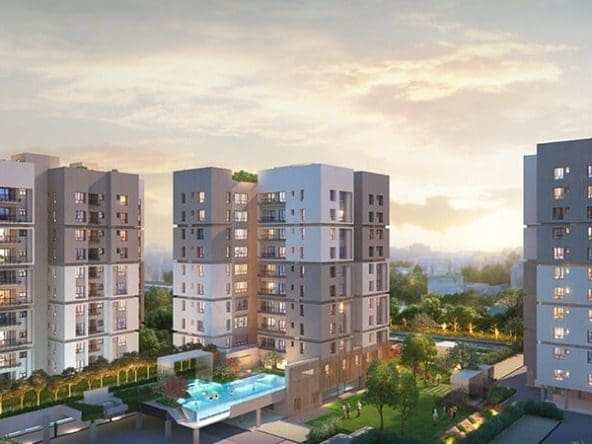In the third quarter of 2023, India rose by 18 positions to secure the 14th rank in Knight Frank’s global house price index. The country experienced a 5.9% year-on-year increase in home prices, indicating notable upward momentum. On a global scale, home prices in the 56 markets analyzed by Knight Frank’s Global House Price Index grew by an average of 3.5% year-on-year in September 2023, compared to a 2.2% increase in the previous quarter.
According to a report from Anarock, several specific micro markets in India, particularly the technology hubs of Hyderabad, Bangalore, Pune and Kolkata experienced significant price hikes. Prices in these areas surged by approximately 28-33% over three years.
Through this article, we’ll explore how the Indian residential market has been robust. So, read till the end.
Indian Real Estate Sector: 2023 Sales Exceed 2022 Figures by 7%
Despite increases in prices, the Indian real estate sector has remained strong. By the conclusion of the third quarter of 2023, approximately 349,000 units were sold across the top 7 cities, compared to 365,000 units in 2022. Simultaneously, the total sales value of sold housing inventory rose to ₹3.48 trillion. In the initial nine months of 2023, the cumulative sales value of residential properties has already surpassed that of the entire year of 2022 by 7%.
Industry experts said that property values remained unchanged or decreased steadily over a period of 5 to 6 years beginning in 2013. Throughout this period, there was a noticeable lack of demand. However, following the Covid-19 pandemic, we witnessed a significant resurgence in demand, exceeding previous peaks.
After the pandemic, prevailing trends in residential real estate have centered around eco-friendly features, community-oriented living, apartments with balconies, home automation systems, and a range of modern amenities. These trends have been influential in shaping the residential market landscape.
Reviving The Residential Market: Several Factors Are Behind This
Several elements fueled the ascent of property values, such as accumulated demand, a penchant for enhancements, and a readiness to invest in superior amenities. Moreover, enhancements in the economic landscape and infrastructure enhancements contributed to the uptick in property values.
1. Accumulated Demand: Over time, there was a build-up of demand for properties, creating a competitive market environment where prices were driven upwards.
2. Penchant for Enhancements: Homeowners and buyers showed a strong preference for properties with added features and upgrades, leading to increased demand for such properties and subsequently higher prices.
3. Readiness to Invest in Superior Amenities: There was a willingness among buyers to pay more for properties offering modern amenities and conveniences, driving up the prices of such properties.
4. Economic Landscape Enhancements: Improvements in the economic scenario, such as growth in employment opportunities and income levels, contributed to increased purchasing power and consequently higher demand for properties.
5. Infrastructure Enhancements: Development in infrastructure, including transportation networks, utilities, and public services, enhanced the overall desirability of properties in certain areas, leading to price appreciation.
Final Words
The real estate and construction sectors serve as significant drivers of economic growth, creating a ripple effect on job opportunities, the performance of around 270 related industries, and investment capital.
The increased growth rate in real estate is expected to bolster India’s GDP growth substantially. Projections suggest that the Indian real estate market will expand to $1 trillion by 2030, contributing nearly 15% to the country’s GDP.



